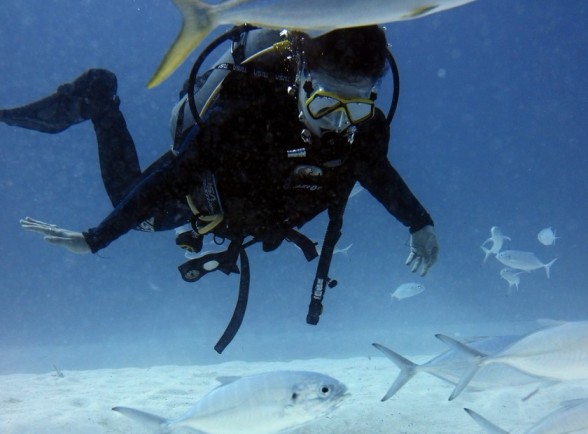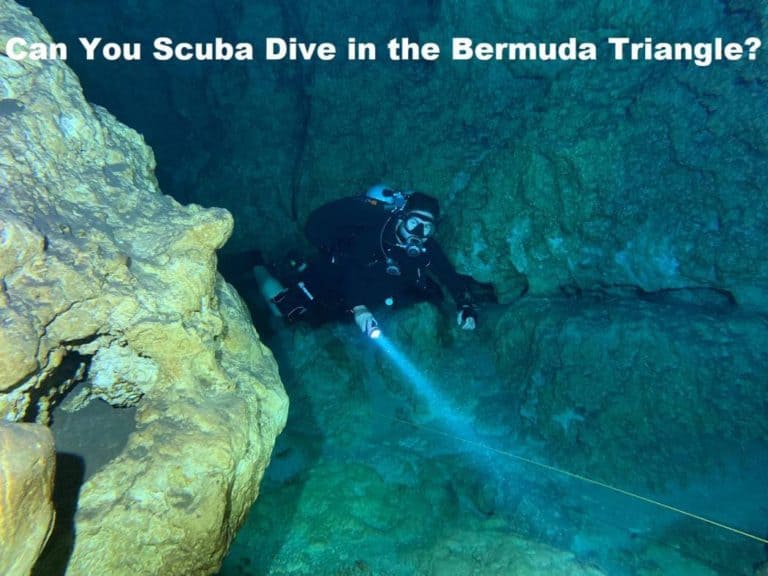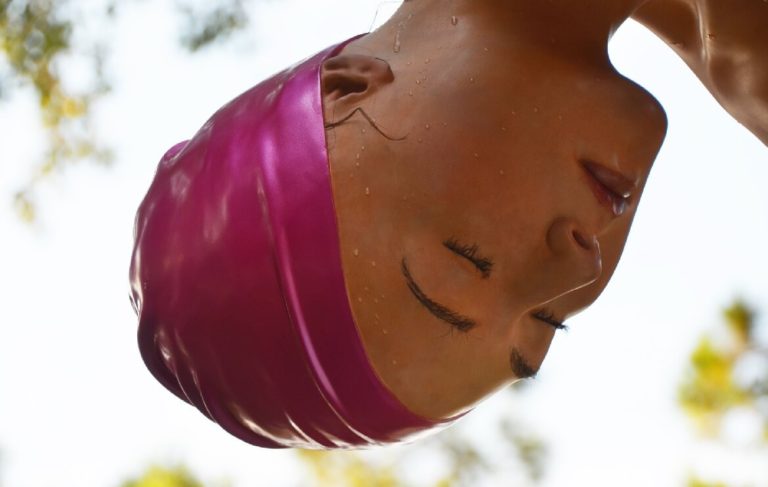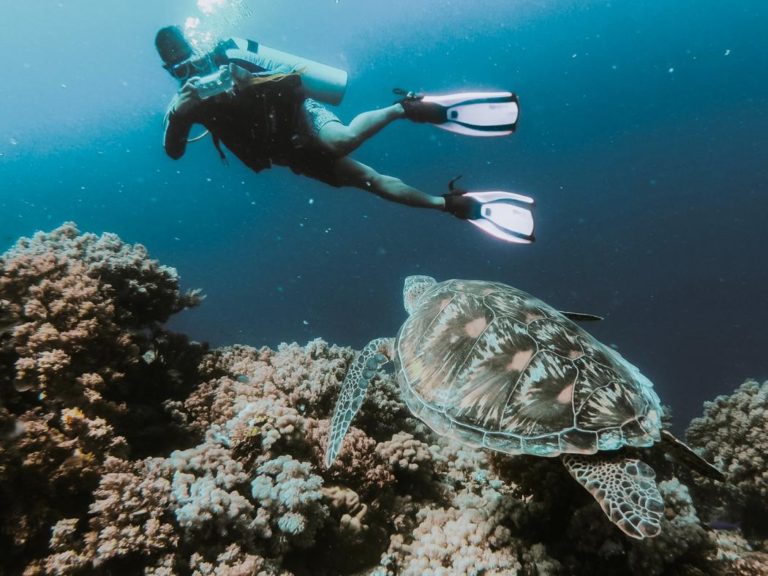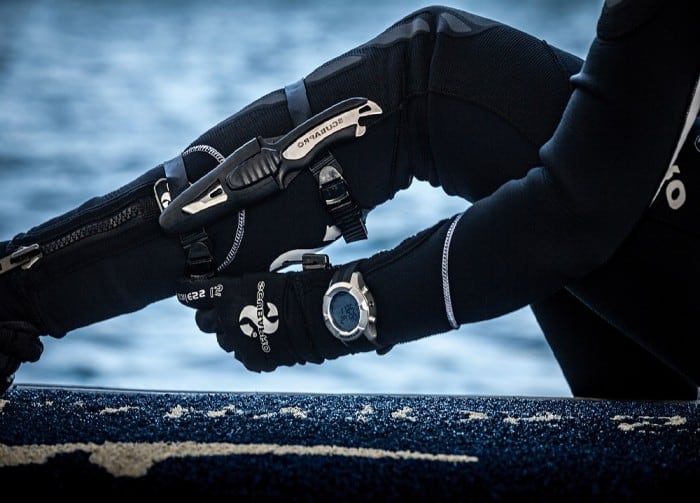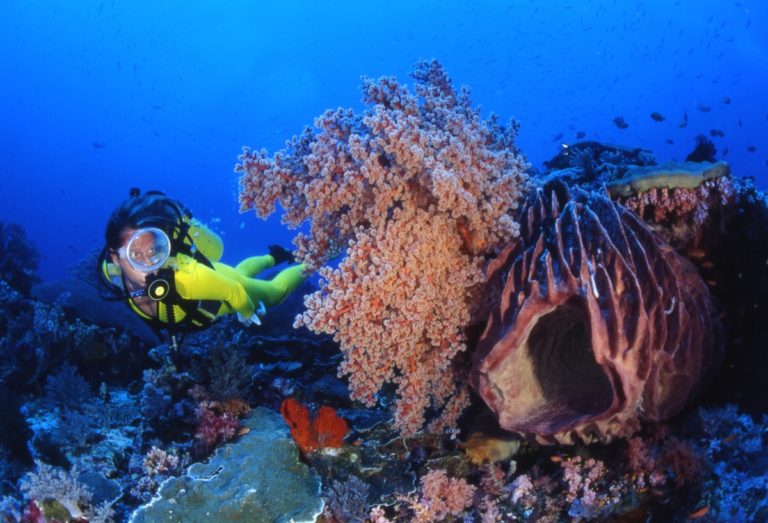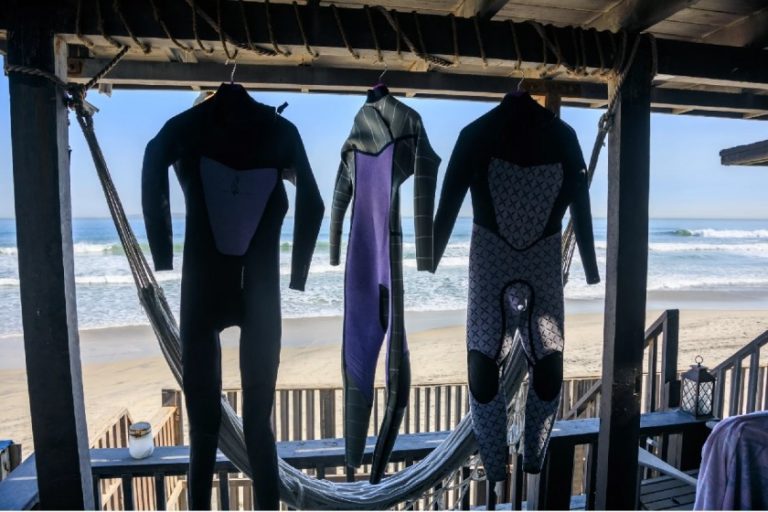How Do Scuba Divers Communicate Underwater
Underwater communication is very important in scuba diving. Divers communicate with each other when experiencing challenges with their equipment, to ask questions, when there is incoming danger, or when they need to point out something interesting to their dive team or buddy.
Scuba divers communicate underwater using various techniques including hand signals, transceivers, dive slates, flashlights, rope tugs, hardwired voice systems, or through the water. The most common mode of communication among recreational scuba divers is using hand signals.
Professional divers mostly use high-performance communication systems such as transceivers to keep in touch with their buddies as well as those on the dive boat.
Divers can use two or three modes of communication or simply stick to only one. Night divers may find flashlight communication more effective than using a dive slate since it would be impossible to write or read the slate.
The type of mask also affects how divers communicate with each other. Divers wearing full-face masks often worn with dry suits can talk freely because they don’t have a regulator in their mouths. On the other hand, recreational dives will have challenges talking with a regulator in their mouth.
In this article, we’ll look into underwater communication among scuba divers, why it’s important, how divers are able to keep in touch and so much more.
Keep reading to learn more!
Can Divers Talk To Each Other Underwater
Yes, divers wearing full-face masks can easily talk to each other underwater with the help of a transceiver attached to the diving mask next to the ear.
Divers close to one another can understand each other by talking slowly and loudly to their buddies. Sound travels fast in water making it possible to understand or hear anyone close to you.
However, divers far away only pick up the vibrations but wouldn’t understand what you are trying to say. This is where the transceiver comes in handy. A transceiver helps pick up and translate the vibrations in water into words you can understand.
Recreational scuba divers don’t need advanced communication systems for various reasons.
First, hand signals used in diving are effective ways of communication at this level. When combined with other simpler modes of communication such as using dive slates, divers can easily communicate with each other.
Secondly, most recreational divers don’t use full face masks which makes talking easier for divers. Many divers in this category use a mask and a regulator for easy breathing. The regulator makes it difficult to talk normally, you also don’t want any salty water flushing your mouth in an attempt to communicate.
The diving mask also poses a challenge in communication as it pinches the nose. Trying to talk with your mouth full and nose pinched is quite comical and your buddies wouldn’t understand you.
Professional divers on the other hand can communicate with their fellow divers or those on the dive boat through the transceiver usually attached to the mask next to the ear.
As the diver is talking, the transceiver is picking vibrations and sending them to the other diver’s transceiver. The vibrations are then relayed to the others as normal voices making it easy to understand one another.

Can You Talk In a Diving Mask
Divers can only talk normally and freely when wearing a full face mask.
A full-face mask doesn’t require the diver to have a regulator in their mouth to breathe. It’s designed to protect the diver’s eyes and face as well as allow them to breathe. The mask regulator is connected to the air tank.
Divers wearing a regular mask and regulator in the mouth can’t talk normally. As mentioned above both the mask and regulator interfere with normal communication.
Do Scuba Divers Use Walkie-Talkies
The logosease walkie-talkie attached to the mask allows divers to communicate with each other using ultrasound and radio wave techniques.
The walkie-talkie picks up the sound waves and transmits them to the other diver through their walkie-talkie.
Unlike regular walkie-talkies used on land, with diving walkie-talkies you don’t have to speak directly into it or press any buttons to communicate.
These may still be quite difficult to use especially with a regulator in the mouth but are very effective for divers wearing full-face masks.
Watch this short video on how to use a diving walkie-talkie and how it works in underwater communication.
Are There Microphones in Scuba Gear
In hardwired communication systems, wires or cables are connected from the diver to the communication station.
When this communication system was first introduced, the divers had to wear a helmet with a speaker in it to help them receive communication. A microphone placed near the mouth at the front of the helmet or around the throat was important for the diver to send speak.
This technique was used by divers in the late 20th century and is still used today by professional and technical divers but not used in recreational diving.
Today many divers prefer a wireless communication system. Advancements in technology allow divers to maintain communication with those on the dive boat as well as with fellow divers.
Those on the dive boat can easily monitor the divers’ vitals as they dive deeper. Making it easy to alert them in case danger arises or their vital signs start going to dangerous levels.
This mode of communication is widely used in commercial diving, and in the military, among other technical divers. Divers go deep into the water and in risky environments such as caves and wrecks, it’s important to maintain communication with those on the surface.
Using a cable is still important for such divers as wireless means of communications can gt interruptions, especially when diving in extreme environments.
Importance of Underwater Communication in Scuba Diving
Communication among scuba divers is crucial. It’s also important for professional divers to maintain contact with one another as well as with those on the dive boat.
Some of the importance of underwater communication include;
- Helps divers alert each other in case of danger or emergencies
- Divers can ask for help if their equipment malfunctions
- Communication helps divers ask questions about creatures are anything else from each other
- Allows divers to explore the underwater world by pointing out interesting spots to other divers
- Helps divers stay together, especially night divers. Flashlight communication can help you spot your buddies and avoid separation
- Underwater communication helps technical or commercial divers relay information to those on the surface for analysis
- The ability to communicate underwater makes diving fun
- Communication is important to check if divers are okay

Parting Words
Scuba divers can communicate with each other using a combination of various techniques. As we’ve seen recreational divers mostly use hand signals and dive slates to communicate. At this level, high-performing communication systems are not really necessary.
Commercial and other technical divers however need high communication systems to help them understand each other. Hand signals or dive slates are not useful at high depths. This is because sunlight doesn’t reach deepwater levels it would be difficult to use them.
Advanced communication systems are also very expensive and wouldn’t make much sense for recreational divers.
But no need to worry, use hand signals to communicate with your buddies next time you go diving they will easily understand you at no extra cost to you.

